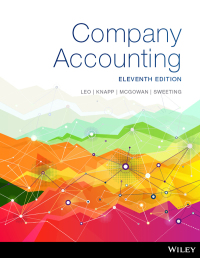


2. Journal entries: Croc-ade, Inc. is a sports drink manufacturer that uses a process costing system. The firm makes its sports drinks in two sequential processes: Mixing and Bottling. The firm reports the following information for the most recent month: Mixing: $35,820 Bottling: $49,125 Beginning WIP inventory Costs incurred during the month: Direct Materials used Direct Labor used Factory Overhead is applied at 80% of Direct Labor costs $56,130 $68,180 ??? $63,115 $77,260 ??? Raw Materials purchased (on account) Indirect Materials used Indirect Labor used Other actual Factory OH costs (paid in Cash) Costs transferred from Mixing to Bottling Costs transferred from Bottling to Finished Goods Cost of Goods Sold Sales (on account) $128,345 $9,020 $69,425 $40,120 $171,430 $200,315 $207,130 $438,005 a. Prepare journal entries to record the following: Raw Materials purchased (on account) b. Direct Materials used c. Direct Labor used (use Factory Wages Payable) d. Factory OH applied e. Indirect materials used f. Indirect labor used (use Factory Wages Payable) g. Actual other overhead costs (all paid in Cash) h. Costs transferred from Mixing to Bottling i. Costs transferred from Bottling to Finished Goods j. Sales (on account) k. Cost of Goods Sold 3. Process Costing - Balance Sheet accounts, ending balances: Frozen Britain, Corp. makes ice cream sandwiches in sequential processes, mixing and freezing. It uses process costing to account for production costs during each period. The following is information obtained from the source documents for Frozen Britain for the month of December: Raw materials purchased (direct and indirect) Raw materials inventory (direct and indirect), beginning balance Direct materials used - Mixing Department Direct materials used - Freezing Department Direct labor used - Mixing Department Direct labor used - Freezing Department Applied Overhead Mixing Department (@120% of department DL costs) Applied Overhead - Freezing Department (@120% of department DL costs) Indirect materials used Indirect labor used Other Factory overhead costs Actual (e.g. factory rent, factory utilities) Work in process (WIP) inventory, beginning balance - Mixing Department Work in process (WIP) inventory, beginning balance - Freezing Department Costs assigned to units completed and transferred out of Mixing Department to the Freezing Department Finished goods inventory, beginning balance Costs assigned to units completed and transferred out of Freezing Department to Finished Goods Cost of goods sold Sales $1,492,042 $91,440 $813,577 $588,033 $910,310 $676,400 $1,092,372 $811,680 $37,122 $51,793 $1,815,150 $129,238 $141,633 $2,819,689 $107,129 $4,883,911 $4,890,468 $6,422,050 Using all of the information given above, determine the December 31st ending balances of each the firm's inventory accounts listed (you must show all of your work, either using formulas/calculations or T-accounts): a. Raw Materials Inventory b. WIP Inventory-Mixing department C. WIP Inventory-Freezing department d. Finished Goods Inventory 1. Process Costing - Equivalent units of production, Weighted Average Method: Runaground Coffee Co. is a coffee manufacturer who uses process costing to account for its production costs each period. The Runaground uses two departments in the production of its product - Drying and Roasting. The following is information obtained for the Drying department only for the month of January: Direct Materials: Percent Complete: 100% Conversion Costs: Percent Complete: 75% Beginning WIP inventory Units started Ending WIP Physical Units: 63,500 221,000 53,560 90% 60% $146,900 $208,450 Costs in beginning Drying Department-WIP inventory: Direct Materials Conversion Costs Costs incurred during January Drying Department only: Direct Materials Conversion Costs $592,740 $623,550 Use the weighted Average method to answer the questions below. You must show all of your work to receive full credit. a. Calculate how many physical units were completed and transferred out to the Roasting Department during January b. Calculate the Equivalent Units of Production (EUP) for January for both DM and Conversion Costs for the Drying department. c. Calculate the cost per EUP for January for the Drying department for both DM and Conversion Costs. Round your final answer to two decimal places (i.e. $6.901456 = $6.90). d. Using your answer to part b and your rounded final answers for cost per EUP from part c, assign costs to the units completed and transferred out of the Drying Department to the Roasting Department during January e. Using your answer to part b and your rounded final answers for cost per EUP from part c, assign costs to the units remaining in the Drying Department's ending WIP inventory as of January 31st









